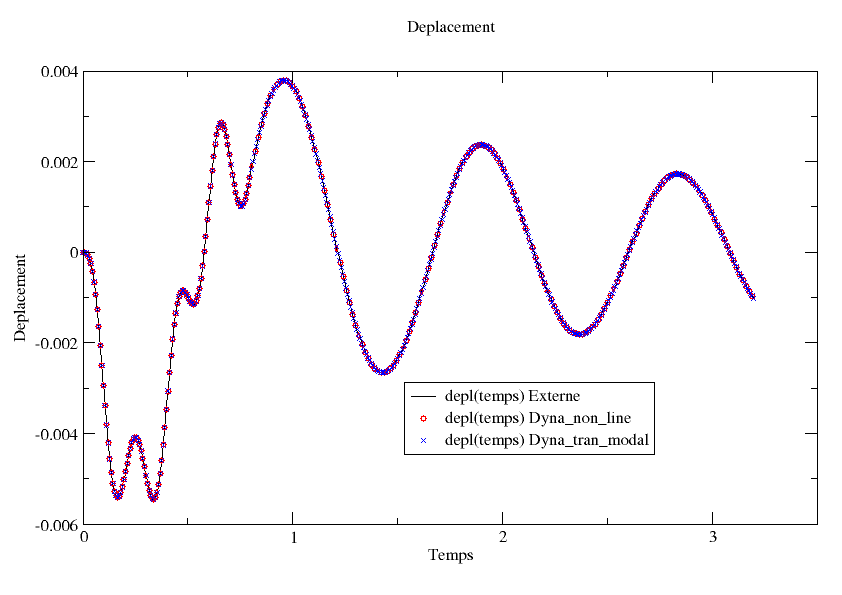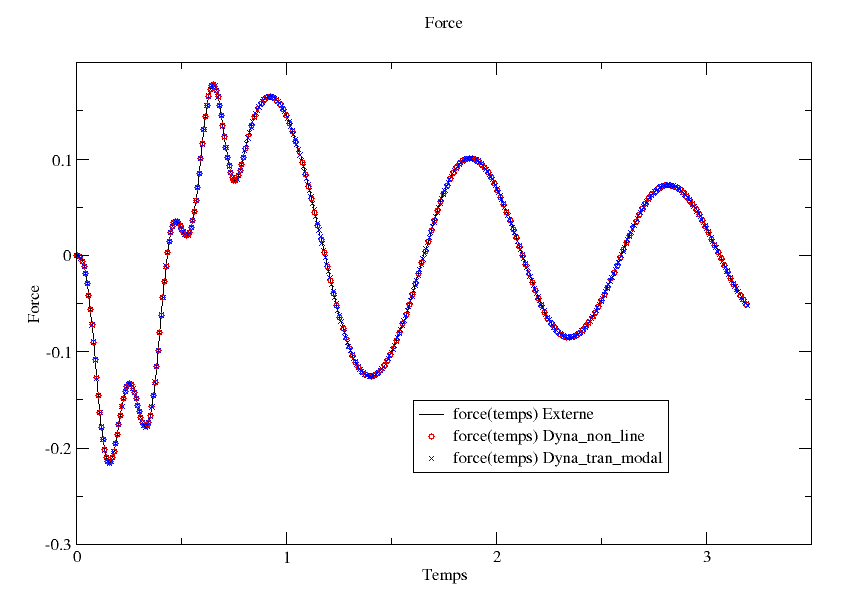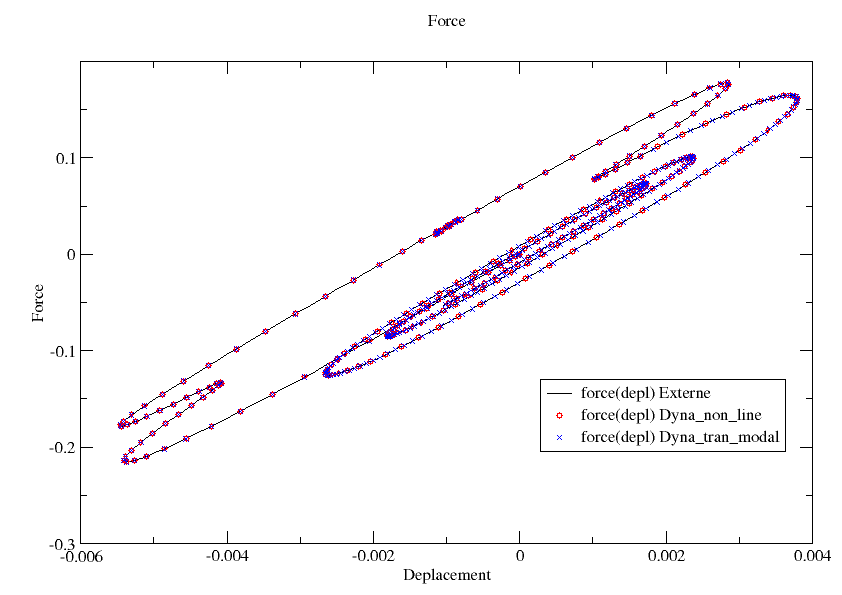4. B, C, D, E models#
4.1. Boundary conditions and loads#
The acceleration condition is a function of time:
\({A}_{0}.\mathrm{sin}(2\pi .\mathit{f.t})\) with \(f=5\mathit{Hz};{A}_{0}=1.0m/{s}^{2}\) for 4 periods i.e. \(t\in [0,\mathrm{0.8sec}]\)
then
\(0\) for \(t\in [\mathrm{0.8sec},\mathrm{3.2sec}]\)

In command DYNA_NON_LINE the time diagram is: for modeling B type NEWMARK (average acceleration).
In command DYNA_VIBRA the time diagram is: for C modeling type EULER, for modeling D type RK54, for modeling E type RK32.
4.2. Tested sizes and results#
The quantities tested are displacement and effort.
The displacement and force functions are extracted from the results and subtracted from the displacement and force functions obtained by a method of integrating the problem external to Code_Aster. These new functions are normalized by the maximum value of either movements or efforts. The quantity tested is the maximum deviation.
This gives for the trip:
\(\mathit{Grandeur}\mathit{testée}=\frac{\mathit{Max}[{\mathit{Depl}}_{\mathit{Externe}}(\mathit{Temps})–{\mathit{Depl}}_{\text{Code\_Aster}}(\mathit{Temps})]}{\mathit{Max}[{\mathit{Depl}}_{\mathit{Externe}}(\mathit{Temps})]}\)
Tolerances are by default.

Figure 4.2-a : Responses (displacement over time) calculated by an external method and by Code_Aster with the commands DYNA_NON_LINEet **** DYNA_VIBRA. **

Figure 4.2-b : Responses (strength as a function of time), calculated by an external method and by Code_Aster with the commands DYNA_NON_LINEet DYNA_VIBRA.

Figure 4.2-c : Responses (Force as a function of displacement), calculated by an external method and by Code_Aster with the commands DYNA_NON_LINEet DYNA_VIBRA.